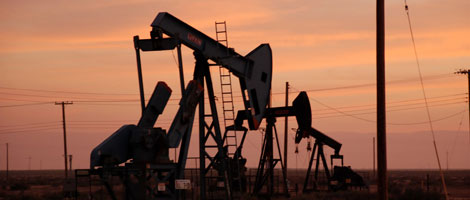U.S. oil benchmark West Texas Intermediate surged 3.61% to $47.34 a barrel and international crude benchmark Brent 3.71% to $48.60 a barrel as of 11:45 a.m. New York time today as the market posited a new, optimistic theory about OPEC November 30 meeting.
That meeting is likely to produce an agreement on significant cuts in production by OPEC members because countries such as Saudi Arabia, Iran, and Iraq had spent so much verbal capital on promises of an agreement that OPEC couldn’t afford not to produce one on November 30.
I’ll grant you it’s a theory. And it’s certainly a theory that justifies going long oil right now with discussions beginning and the meeting itself just a week and a half away.
Today’s rhetorical down payments on an agreement came from Iranian Oil Minister Bijan Namdar Zanganeh who said it’s “highly probable” OPEC will reach a consensus at the talks, and from Iraq’s Oil Minister Jabbar Al-Luaibi who said that his country will make proposals to help reach an agreement. (Russian President Vladimir Putin also weighed in: “Whether an agreement will be reached, I can’t say 100?, but there’s a strong likelihood that it will be achieved,” Putin told reporters on Sunday.)
Led by energy companies, the Standard & Poor’s 500 stock index rose above its record August 15 closing high of 2,190.15. The Dow Jones Industrial Average is on track too, for a new all-time high. The small cap Russell 2000 rose for a 12th straight day in its longest rally since 2003. Even out-of-favor FANG stocks (Facebook, Amazon, Netflix, and Alphabet (AKA Google)) climbed with Facebook up 3.07% as of 11:45 a.m. (It’s probably too soon to declare this a rotation back into this group since the entire market is moving higher today.)
All this will-they/won’t-they about OPEC production cuts has sidelined the question of how big a production cut OPEC would need to produce to do anything meaningful about rebalancing oil supply and demand. Goldman Sachs, for example is predicting that OPEC will set a production level of 33 million barrels a day and that Russia will freeze production. (At its September meeting in Algiers OPEC agreed to work on an agreement that would set production at 32.5 to 33 million barrels a day.) That would be a “victory” since it is an agreement and restores some production limits after OPEC did away with all limits in 2015, but even along with a Russian production freeze a cut to 33 million barrels won’t speed up a rebalancing of global supply and demand. Especially since recent forecasts call for lower growth in global demand in 2017 than previously forecast and since U.S. shale oil producers are adding rigs at the faster pace in 16 months and look like they’re on a path to increase production in 2017.


